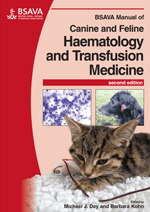
Full text loading...

The most common cause of severe thrombocytopenia is immune-mediated thrombocytopenia (IMTP). IMTP is defined by a low platelet count, normal bone marrow function, the absence of other causes of thrombocytopenia and response to immunosuppressive therapy. This chapter covers pathogenesis of primary and secondary IMTP; acquired amegakaryocytic thrombocytopenia; causes of secondary IMTP; clinical approach to primary IMTP; management of IMTP; prognosis.
Immune-mediated thrombocytopenia, Page 1 of 1
< Previous page | Next page > /docserver/preview/fulltext/10.22233/9781905319732/9781905319732.26-1.gif

Full text loading...









